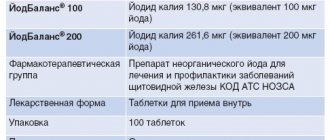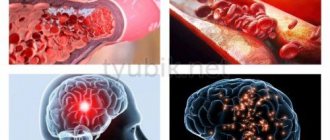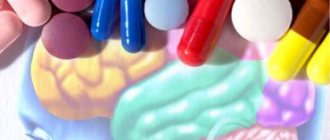Contraindications
- Pneumonia;
- Bronchial asthma;
- Respiratory failure;
- Impaired liver and kidney function;
- Traumatic brain injuries;
- Hypocoagulable states;
- Hypotension;
- Arrhythmia;
- Collapse;
- Intoxicating diarrhea;
- Epilepsy;
- Alcohol intoxication;
- Pregnancy (especially the first trimester and before childbirth);
- Lactation period (or feeding should be stopped);
- Children under 2 years of age;
- Hypersensitivity.
How to recognize a drug addict
At the beginning of the development of addiction, it is difficult to determine that a person is becoming a codeine addict. You can only suspect it at the moment of the drug's effect or at the moment of abstinence (when the drug's effect has ended).
While the drug is in effect, the patient may be in a good mood. He is calm and reacts weakly to pain. He may have problems with orientation in space and time. The pupils are as narrow as possible, the heartbeat is slow, breathing is deep and slow. At the end of the drug's effect, deep sleep occurs.
In a state of withdrawal, the patient is irritable. He constantly goes into conflict for no apparent reason, constantly looking for something. Money or jewelry may disappear from the house. In a state without drugs, a person is capable of deception and even physical violence for the sake of a new dose. At this time, his eyes constantly dart, sudden movements appear, and his speech is fast, loud, but slurred.
The appearance of a large number of packages of cough suppressants can lead one to believe that it is a codeine addict. In the state of drug action, the patient does not think about disposing of the packages, and in the state of withdrawal he is concerned about finding a new dose.
Death from an overdose of opiates (including codeine) is associated with intoxication in 44%; in more distant periods, death occurs due to pneumonia or myocardial dystrophy. More rarely due to sepsis or posthypoxic encephalopathy.
Taken from the scientific article: “TOXICOLOGICAL CHARACTERISTICS OF OPIATE POISONING” author: Shigeev S.V.
But it is difficult to determine by appearance that a person is addicted to such a drug. Testing is always necessary to confirm.
Get help now
Do any of your relatives or friends have an addiction? Have you tried in every possible way to help, but as a result the person still returned to his past life?
You are not the first to encounter this problem, and we can help you.
We guarantee anonymity, we will persuade you to undergo treatment, and we will help you choose a center.
Call us
+7
or
Call me
Directions for use and dosage
Codeine should be taken orally.
The maximum permissible daily dose is 120 mg.
Recommended doses for adults depending on indication:
- Pain – 15-60 mg every 3-6 hours;
- Cough – 10-20 mg 4 times a day;
- Diarrhea – 30 mg 4 times a day.
Recommended doses for children:
- Pain – 0.5 mg/kg 4–6 times a day;
- Cough – 10 mg/kg 4–6 times a day;
- Diarrhea – 0.5 mg/kg 4 times a day.
Medicines with codeine
Codeine-containing drugs cannot be purchased freely at pharmacies; to take them, you need to get a prescription from a doctor. This measure was taken due to the psychotropic effect of this drug on the body and the formation of drug dependence with long and painful withdrawal.
Cough syrup with codeine
- Kofex is a cough medicine with antihistamine properties. Relieves swelling of the lungs, fights the runny nose. Recommended for bronchological diseases accompanied by severe cough.
- Tussmag - has a strong expectorant effect, thins mucus. Effective for inflammatory diseases of the respiratory tract accompanied by sputum (bronchitis, trachitis).
- Codesan is prescribed for coughs caused by diseases of the bronchi and lungs.
- Kodarin is a drug to combat severe cough due to pneumonia, pharyngitis, and bronchitis.
Codeine drops
- Codelac Neo – drops for cough treatment. Allowed for children from 2 years old. Also contains licorice root, narthium hydrocarbonate and blackthorn herb. Indicated for acute cough, promotes sputum discharge. The action can last up to 12 hours.
- Solpadeine is a pain reliever. The composition also contains paracetamol and caffeine. Can also be used as an antitussive. Not allowed for children under 12 years of age. Due to the high likelihood of side effects, the drug can be used for no more than three days.
Codeine tablets
- Codeine phosphate hemihydrate is an antitussive, opioid narcotic analgesic.
- Codeine base is a centrally acting antitussive drug that reduces the excitability of the cough center.
Codeine combination preparations
- Terpincode . Codeine (8 mg) is contained in a complex with terpin hydrate and sodium bicarbonate. It is used for severe coughing and as an expectorant. Recommended for the treatment of diseases of the respiratory system. The effect lasts for 6 hours. The drug should not be used for more than 5 days.
- Tedein . This drug contains two main active components: codeine and terpine hydrate. Due to this combination, the medicine has a pronounced antitussive effect, which is accompanied by an expectorant effect.
Painkillers with codeine
- Pentalgin is an analgesic and sedative drug that also contains caffeine, paracetamol and phenoborbital. It is also an antipyretic.
- Caffetin is a combined drug that has antipyretic and anti-inflammatory effects. When combined with caffeine, codeine produces an analgesic effect.
Side effects
Possible adverse reactions caused by taking Codeine:
- From the digestive system: constipation, nausea, vomiting, intestinal atony;
- From the cardiovascular system: arrhythmia, bradycardia, hypotension;
- From the central and peripheral nervous system: headaches, drowsiness; when taken in high doses and in case of hypersensitivity - deterioration in coordination of movements of the eyeballs with blurred vision, respiratory depression, increased tone of smooth muscles (when taken in doses above 60 mg);
- Allergic reactions: skin itching and exanthema like urticaria;
- Other: bladder atony, weight gain, drug dependence, addiction, withdrawal syndrome.
Chemical and toxicological study of biological samples
Codeine is metabolized in the body in three ways:
- Binding to glucuronic acid - excreted in urine as a glucuronide;
- O-demethylation – morphine is formed;
- N-demethylation – narcodeine is formed.
There are no rapid tests for determining codeine. Therefore, tests are used to determine specific antibodies to morphine. Immunochemical analysis is considered a preliminary study. Therefore, biological samples are sent for laboratory diagnostics.
Brands and manufacturers of express tests:
- ImmunoChrome – Morphine – Express – strips for one-step determination of metabolites in urine. MED-EXPRESS-DIAGNOSTICS company (Russia);
- Narcochek - tablet test - system for determining metabolites in urine. I&D Diagnostics Company (Canada);
- Vivacek is a rapid test for determining morphine and its metabolites in the blood. Manufacturer USA.
Express tests do not determine the concentration of a substance, so it is only possible to establish the fact of drug addiction.
Chemical and toxicological analysis in the laboratory is carried out in two stages. The first is preliminary testing of the sample. More often, a urine sample is used for testing, since traces of the drug are present for a longer time. The second stage is confirmatory. The gas chromatography method is considered the most reliable and accurate.
Various laboratory identification methods can distinguish codeine from morphine. Morphine and codeine are similar structural alkaloids, therefore they give a number of positive reactions to the same reagents. But at the same time, codeine does not give a positive reaction with ferric chloride and potassium hexacyanoferrate. Codeine can also be distinguished from morphine by light absorption in the infrared region of the spectrum.
Kramarenko V. F. Toxicological chemistry / Kramarenko V. F.
Gas chromatography allows you to study any biological samples. It is impossible to deceive a chemical-toxicological study.
Drug interactions
Codeine enhances the effect of ethanol, clonidine, tranquilizers, opioid analgesics, benzodiazepines, barbiturates, antipsychotics, antihypertensive drugs and anesthesia.
Naltrexone and naloxone are specific antagonists of codeine.
Quinidine significantly reduces or even completely eliminates the analgesic effect of the drug.
When taking codeine in combination with ibuprofen or carbamazepine, the analgesic effect may be enhanced.
With the simultaneous use of morphine derivatives, there is a possibility of increasing the inhibitory effect on the respiratory center.
Drug Codeine
Codeine-based drugs are widely used in modern medicine. This substance is included in many medicines, for example Nurofen, Codelac, Pentalgin and other medicines with similar effects.
What is codeine?
Codeine is a pharmaceutical agent widely used in the production of antitussive, analgesic and antidiarrheal drugs. When consumed in large doses, this substance is used as a narcotic because it produces a feeling of euphoria and serenity. Regular use of codeine causes severe addiction, accompanied by long and painful withdrawal symptoms.
This drug is distinguished by its speed of action. It only takes a few seconds for a person to begin to feel changes. The full effect of taking it occurs after an hour in the form of a feeling of drowsiness and carefree. He can remain in such a happy and serene state for up to 6 hours. At this time, he becomes indifferent to everything that happens around him.
After taking a dose, the addict’s limbs become heavy, so addicts lie down comfortably on the sofa or even the floor in advance so that they don’t have to move later.
But when using codeine-containing drugs strictly according to the prescription and in recommended doses, there is no need to be afraid of this substance. Antipyretic and pain-relieving medications contain ibuprofen or paracetamol along with it, which reduce side effects and reduce the risk of addiction.
Figure: Codeine
Composition of the substance
In its composition, codeine is a 3-methylmorphine compound or an opium alkaloid. It has a strong antitussive effect, due to which it is included in many medications, for example Codelac, Sedalgina. Due to its weak analgesic effect, it is used as a component of painkillers such as Nurofen, Pentalgin and others.
Codeine in Latin
In Latin, the name of codeine is as follows - Codeinum (genus codeini).
Codeine Formula
Fig.: Formula
The formula of the substance is C18H21NO3.
Pharmacology
According to its pharmacological properties, this substance belongs to antitussive, analgesic (opioid), and antidiarrheal drugs.
The analgesic effect occurs due to the stimulation of opiate receptors in the central nervous system, which lead to changes in the emotional perception of pain.
The substance is absorbed quickly and almost does not bind to plasma proteins. Biotransformed in the liver, with 1/10 of the drug demethylated into morphine. The maximum effect is observed 30-40 minutes after intramuscular administration, and an hour after enteral administration.
Release form
Codeine as an antitussive agent is available in tablets, in a dosage of 15 mg/1 t.
In combination with other substances, it can also be in the form of a suspension, powder, syrup, solution for intramuscular administration.
Codeine analogue
In any case, the issue of taking a drug with codeine should be decided by a doctor, since these drugs are banned in Russia and can only be purchased with a prescription.
Analogs of Codeine as an antitussive include the following drugs:
- Resistol;
- Ambroxol;
- Flavamed;
- Omnitus;
- overslept;
- Sinekod.
Painkillers and antipyretics similar in action to Codeine: Dafalgan, Promethazine, Amphedol, Continus.
Photo
Fig.: Photo of codeine preparation
Chemical properties
Codeine - what is it?
According to Wikipedia, the substance is an opium alkaloid , an antitussive with central action. The drug is a natural pain reliever from the group of opiate receptor agonists .
Opium contains from 0.2 to 2% of this alkaloid . The compound is also produced using the methylation reaction of morphine . When treating young children, Codeine Phosphate , a derivative of Codeine, is used.
The pharmacopoeial monograph states that the molecular weight of the drug = 299.4 grams per mole. The compound appears as white or colorless crystals, odorless, with a specific bitter taste. If exposed to air for a long time, the product will erode. Codeine dissolves poorly and slowly in cold water and well in hot water and alcohols. Codeine solutions give an alkaline reaction.
When used in large dosages, the drug acquires the properties of a drug and causes euphoria . In pursuit of this kind of sensation, if you take a dose significantly higher than the therapeutic dose, you can become poisoned by Codeine. With regular use, the medicine is addictive. Therefore, on the territory of the Russian Federation, the circulation of the substance and its precursors is subject to state control.
Overdose
Symptoms of overdose include cold clammy sweat and confusion. Dizziness, drowsiness, decreased blood pressure, nervousness, fatigue, bradycardia, severe weakness, slow difficulty breathing, hypothermia, anxiety, miosis, convulsions. In severe cases, loss of consciousness, respiratory arrest, and coma are possible.
Treatment includes gastric lavage, maintaining respiratory and cardiac activity, as well as stable blood pressure levels. In case of overdose, intravenous administration of a specific antagonist of opioid analgesics, naloxone, is indicated.
Content:
- What is codeine:
- Consequences of using codeine:
- Treatment methods.
1.1. Mechanism of action of codeine.
2.1. First stage. 2.2. Second phase. 2.3. Third stage. 2.4. Symptoms of drug intoxication. 2.5. Picture of withdrawal syndrome. 2.6. Overdose.
Codeine is an officially registered drug. The product has an analgesic and antitussive effect, thanks to which it is still used for medicinal purposes. But, like other opium poppy alkaloids, codeine has a psychostimulant effect. Although it is less pronounced than with morphine and synthetic opiates (heroin, methadone, fentanyl), uncontrolled use of the drug can cause physical and psychological addiction - codeine addiction.
special instructions
During treatment with drugs containing codeine, it is recommended to refrain from taking ethanol, to be careful when operating potentially dangerous mechanisms (driving a car) and engaging in potentially hazardous activities that require extreme concentration and speed of reactions.
No studies have been conducted on the use of codeine phosphate during pregnancy, so taking this drug during pregnancy and breastfeeding is possible only for health reasons (possible development of drug dependence in the fetus and depression of the respiratory center).
When prescribing Codeine to children under two years of age, it should be taken into account that they are most sensitive to the effects of opioid analgesics, and therefore paradoxical reactions are possible.
Codeine phosphate reduces salivation, which can contribute to the development of diseases of the oral mucosa, periodontal disease, candidiasis, and caries.










